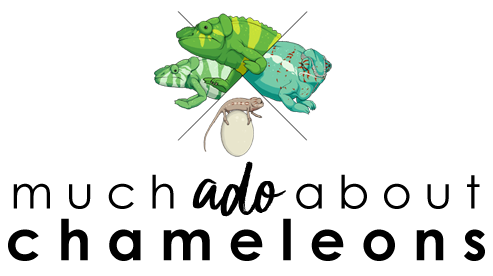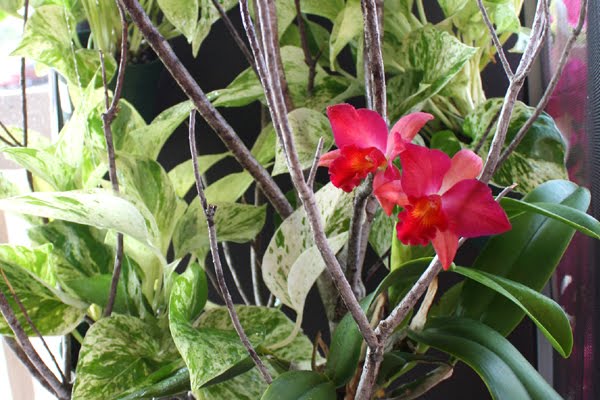Just as I keep records of my dogs' important medical records and information, such as vaccination receipts, rabies certificates, and training diplomas, so do I also keep records of my chameleons. I think this is a fairly overlooked aspect of successful pet keeping, especially among people who only keep a couple pets because it seems totally unnecessary to keep reptile records when they can easily remember their last recorded weight or the date of their last shed. But could they remember months of information? What about years?
You can see how even with a small handful of chameleons the amount of details that are worth remembering are probably best written down! Keeping track of weight gain or loss can be an incredibly powerful tool in recognizing the early signs of a health problem, and tracking whether a female's egg count is increasing or decreasing will help you keep their diet balanced. It costs nearly nothing to do and it can be extremely relevant to long-term breeding projects or in case the vet needs pertinent info.


At this time I only have three chameleons (albeit large chameleons!) and they still have their own binder. I would like to show you what my own personal chameleon binder looks like, how I have it organized, and what information you want to keep track of in case you ever need it.
The binder I use is a 3-ring Kraft paper binder I purchased from Target for under $5. Inside the binder I have the following sections:
1. Individual Profiles & Medical Records
Where I have a photo and a profile for each individual, followed by any and all medical receipts and vet visit notes.
2. Periodic Weight & Health Logs
Where I jot down their weights, measurements, sheds, and other relevant info every 2 weeks.
3. Breeding Logs
Where I track breeding info such as mating dates, laying dates, number of eggs, etc.
4. Melleri Colony - Future Plans
Where I keep brainstorm my breeding strategies, future cage builds, and general colony plans.
1. Individual Profiles & Medical Records
Where I have a photo and a profile for each individual, followed by any and all medical receipts and vet visit notes.
2. Periodic Weight & Health Logs
Where I jot down their weights, measurements, sheds, and other relevant info every 2 weeks.
3. Breeding Logs
Where I track breeding info such as mating dates, laying dates, number of eggs, etc.
4. Melleri Colony - Future Plans
Where I keep brainstorm my breeding strategies, future cage builds, and general colony plans.
Section 4 is probably just for me, but anyone considering serious breeding projects should probably lay out a long-term plan, keep track of costs and profits, and treat breeding like the business move it is. Additionally, since I am attempting to breed a species that is difficult to breed in captivity I want to make sure I keep good records, especially as they relate to changes in my husbandry - is everyone gaining weight better when kept outside or are they not thriving as well? Did keeping everyone on one free range inspire more mating activity or is keeping them separate and then introducing them yielding better results? This is all information that as a biologist I'm interested in keeping, so that I can potentially share it with other's also looking to breed Meller's.
And in my final section, my planning section, is where I maintain any notes or projected plans. In the example above, I have a page I sketched where I am planning an enormous outdoor melleri colony cage. Additionally, any interesting information regarding this species (especially tips or insight into how others are breeding them) goes here as well, for quick reference.
And that's it! Very simple to set up, and equally simple to maintain.
Does anyone else keep reptile records? How have you chosen to organize your own records, or what have you discovered to be a more efficient system? I'd love to hear what others are doing and recommending.
Above is an example of a typical chameleon profile. I have an identifying profile photo, their name, and all pertinent info; breeder/vendor's name, date of purchase, age, species, sex, etc. Anything that might be useful to remember with each chameleon, not just for my own records but so that I can answer any of these questions if I ever sell the individual animal.
Above is a receipt I have from one of Thaddeus's vet visits. These sit immediately behind his profile page, for my easy reference.
Above is my current weight and stat log for all three chameleons. I take weights and measurements every 2 weeks, and I monitor length changes to monitor if any of my two WC individuals are still growing (and ergo, perhaps under 2 years of age.)
Any additional information goes in this log. Things like treated for parasites on such date, or any pertinent changes in behavior. I keep vet visit receipts and notes next to each animal but this log gives me a quick look over the last several weeks.
And that's it! Very simple to set up, and equally simple to maintain.
Does anyone else keep reptile records? How have you chosen to organize your own records, or what have you discovered to be a more efficient system? I'd love to hear what others are doing and recommending.



















